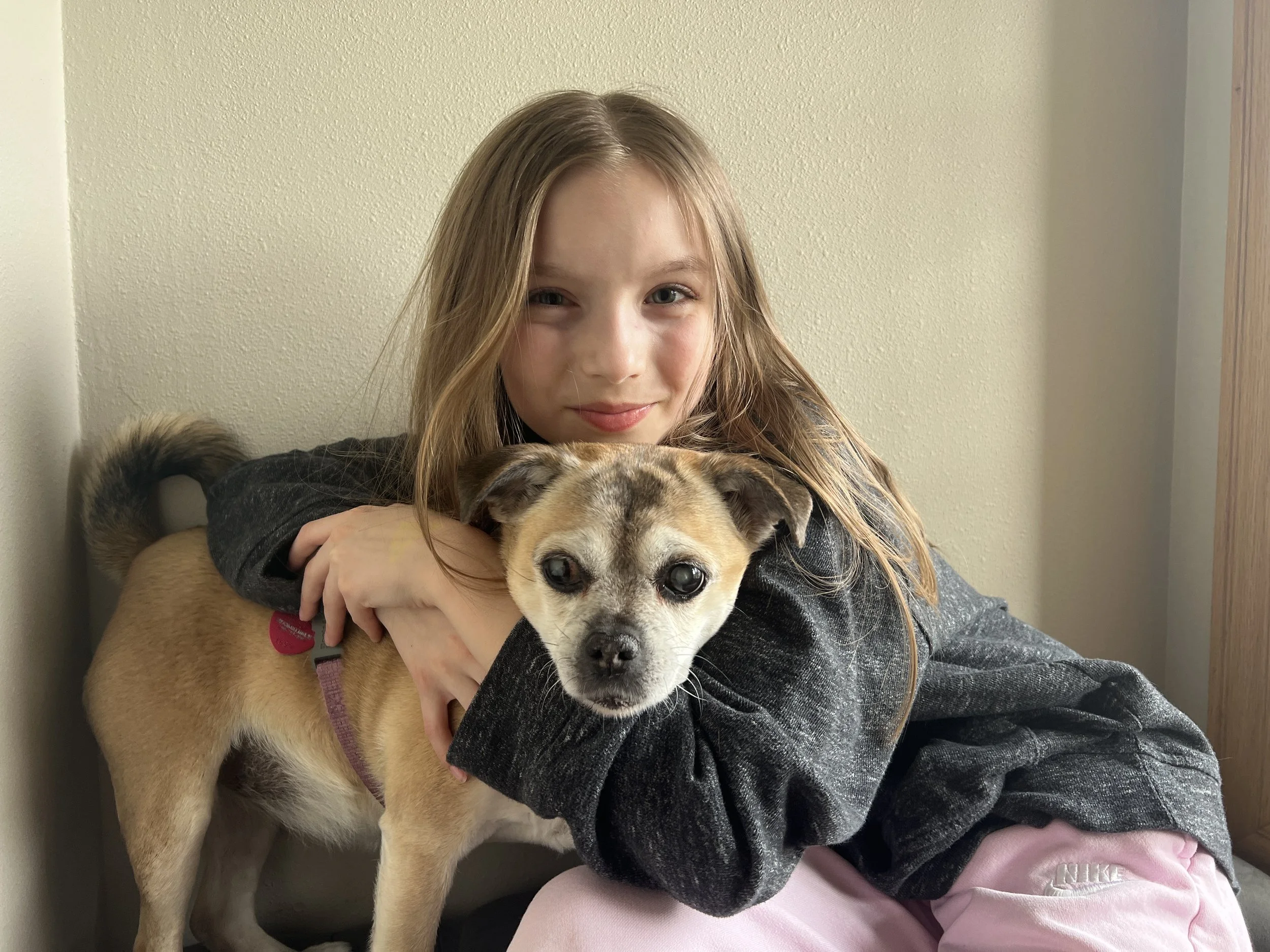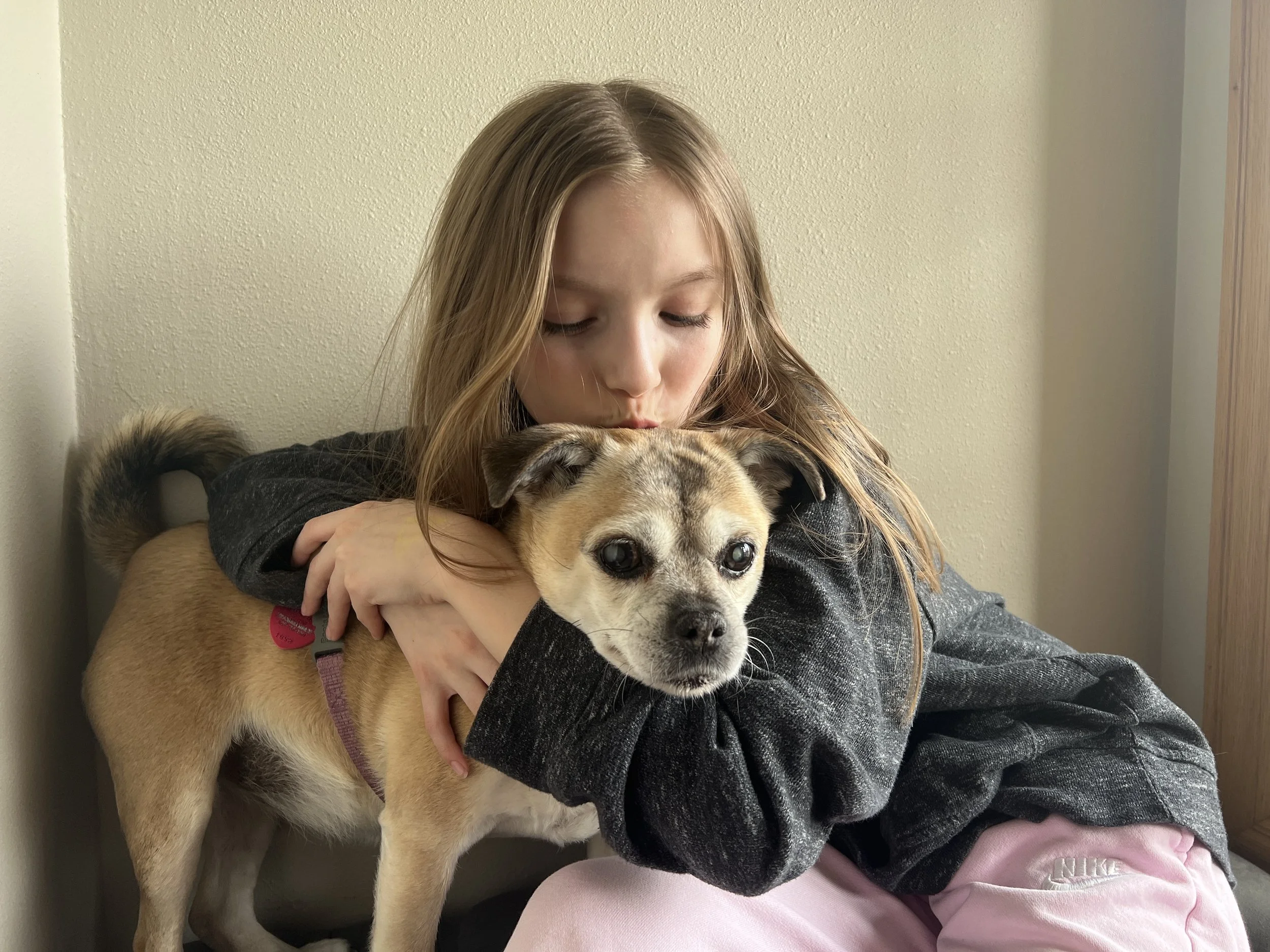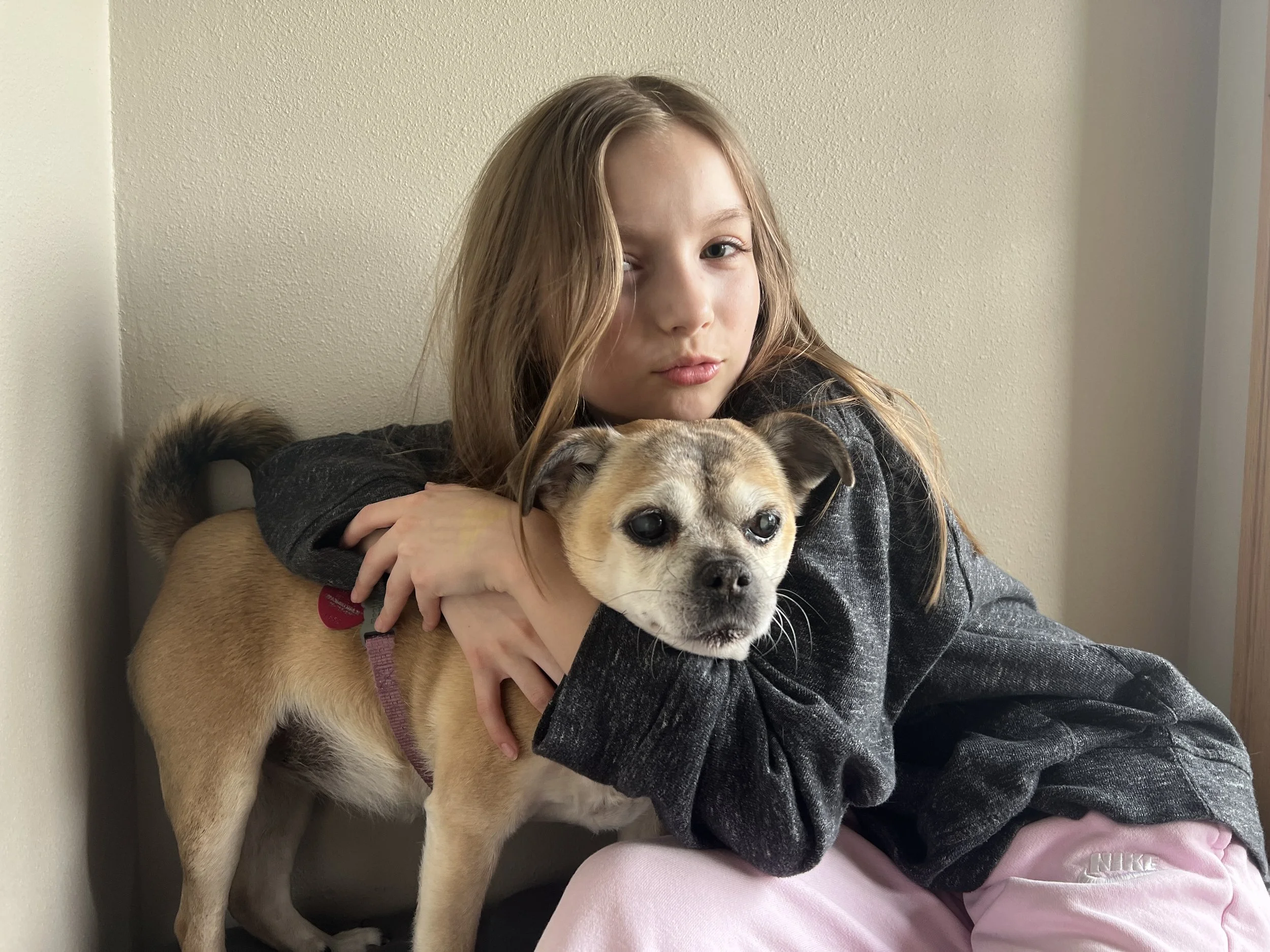WHEN FAILING IS ACTUALLY WINNING
“I don’t think a #fosterfail is a bad thing because it means that your family was the right fit. “ - EMMA
Hey y’all! My name is Emma. I’m 11 years old, turning 12 in May. I live in Wisconsin, soon to be Massachusetts, with my mom, dad, 14-year-old brother and our rescue dog Annie. Here I am with Annie!
We have had many dogs in our family, three of which have been fostered. One of the dogs was a #fosterfail named Benny. We had volunteered to foster him in hopes of giving him a loving home until he found a place to land, but we immediately fell in love and adopted him after 2 weeks. We had recently said good-bye to our previous rescue, a 16 year old Bichon named Scrappy-doo, so Benny entered our lives when we needed his love and companionship the most.
Our other two fosters were named Sadie and Willy, which we fostered through New Beginnings Shih Tzu Rescue.
Fostering can be a lot of work. Many of these dogs have come from horrible situations so they need a lot of patience and keeping them on a schedule for eating and outside bathroom breaks is important. Buy a lot of pee pads! If your family likes to travel or is super busy, then fostering may not be a good idea. Fostering can be beneficial if you want to help an animal but don’t want the long-term commitment.
My favorite part of fostering is getting to know each dog and getting to see their fun personalities. Benny liked to high-five and roll over. Sadie liked to cuddle and get close for belly rubs. Willy was just crazy, but cute crazy. My least favorite part is having to constantly watch them so they don’t pee on anything. If you are going to foster, definitely invest in pee pads and treats! We have only fostered small dogs, so at some point I would like to foster a big dog and maybe even some kitty cats.
ARE YOU READY TO FOSTER???
Here are very important things to think about before you decide to foster:
• Hear from all members of your household on what expectations they have for fostering. Is everyone on board? How will each member contribute?
• Discuss how fostering saves two lives: that of the animal you’re fostering and the space it frees up to house another animal in a shelter. Fostering saves lives!
• Will everyone be able to say goodbye when their foster pet is adopted? Or, are you prepared to “foster fail” if everyone decides the foster animal should stay permanently?
• Understand that foster animals need time to adjust to their new environment. This can take up to three weeks or longer, depending on the animal. Watching a foster animal come into their own is truly rewarding!
• Your foster animal may have “accidents” in the house. Learn about positive reinforcement training techniques. The rescue may provide resources for this.
• Take the needs of resident pets into account. Is your pet friendly with other animals? How will they handle “sharing” their space with another animal? Is there a particular size animal that they do better with (bigger or smaller)? Would they prefer a high or low energy foster companion?
• Introduce foster animals to resident animals slowly. Some separation time may be needed before they can safely interact.
• Make sure all resident animals are current on vaccines and can safely socialize with other animals.
Ensure that all outdoor spaces are securely enclosed and that there are no potential “escape” routes
STILL A YES???? YAY….
Search online or ask your veterinarian for recommendations of reputable rescue organizations. The rescue you choose will likely ask you to fill out an application and provide references.
Once your application is approved, you will be matched with a dog that needs a foster home when one becomes available. GET READY TO LOVE LOVE LOVE them!






